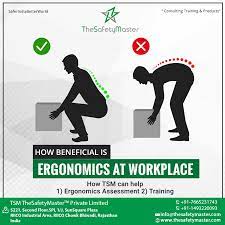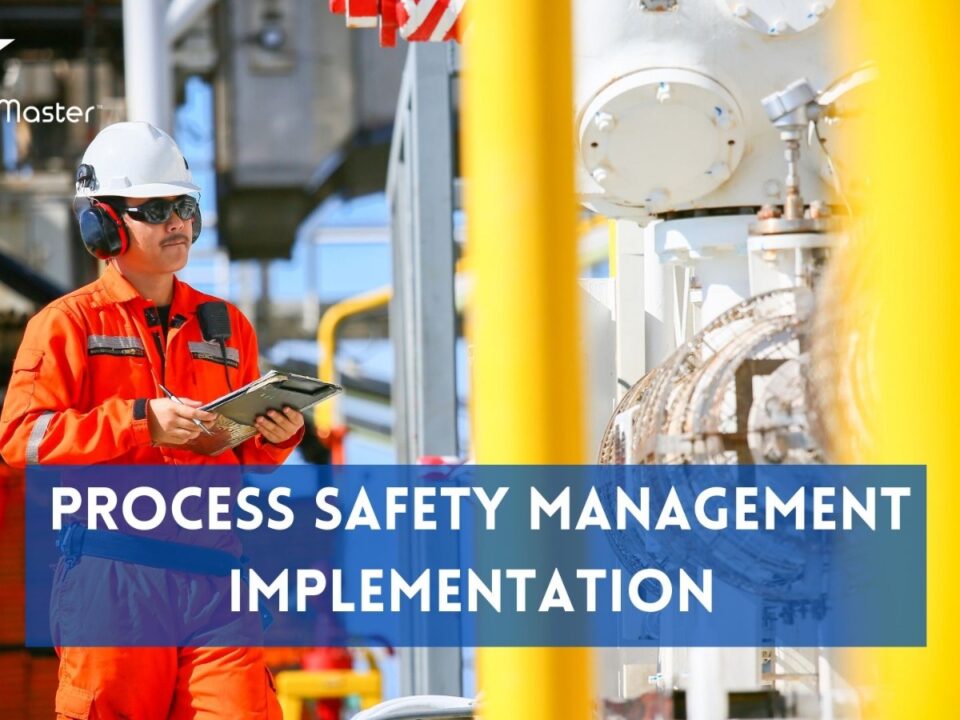The Importance of Ergonomics in the Workplace: A Comprehensive Overview

Understanding the Importance of Contractor Safety in Todays Industrial Workforce
May 16, 2023
best safety training company in India
May 16, 2023The Importance of Ergonomics in the Workplace: A Comprehensive Overview
In this article, we will delve into the significance of ergonomics in the workplace. With the rising cases of work-related injuries and health complications, it’s essential to create a safe and conducive work environment that enhances employees’ productivity and well-being. We’ll explore the different aspects of ergonomics, from desk setups to lifting techniques, and highlight how investing in ergonomics can reduce absenteeism, injury-related costs, and improve employee retention. By the end of this comprehensive overview, you’ll understand how ergonomics isn’t just a workplace perk, but a necessity that impacts your employees’ physical health and your bottom line.
Understanding Ergonomics in the Workplace
Understanding Ergonomics in the Workplace: Ergonomics is the science of fitting a workplace to the worker who works in it. It involves designing tools, equipment, and workstations that accommodate the physical abilities and limitations of workers. The goal of ergonomics is to increase efficiency, productivity, and safety by reducing discomfort, fatigue, and injury among workers.
The importance of ergonomics in the workplace cannot be overstated. Poor ergonomic design can lead to numerous health problems for workers such as musculoskeletal disorders (MSDs), which affect muscles, tendons, ligaments, nerves, joints or bones. MSDs are caused by repetitive motion injuries such as typing on a computer keyboard or working on an assembly line without proper ergonomics practices. Other potential health issues related to poor ergonomics include back pain, carpal tunnel syndrome and eye strain.
To achieve optimum ergonomic benefits for workers and employers alike , it is important to establish a comprehensive program that focuses on identifying ergonomic hazards in the workplace using established principles of ergonomics. Employers should strive to create an environment where employees feel comfortable and supported while performing their job duties which will result in higher productivity levels as well as reduced risk of injury or illness due to inadequate ergonomic practices.
Common Ergonomic Hazards in the Workplace
Common Ergonomic Hazards in the Workplace:Ergonomic hazards are physical factors that can lead to discomfort, musculoskeletal disorders, or injuries. The most common ergonomic hazards in the workplace include awkward postures, repetitive motions, heavy lifting or forceful exertions, and contact stress. In addition, environmental factors such as poor lighting and noise can also contribute to ergonomic hazards.
Awkward postures are positions that deviate from a neutral body position and can put excessive stress on different parts of the body. For example, repeatedly bending forward or twisting sideways can cause strain on the back and neck muscles leading to pain or injury. Repetitive motions such as typing for long periods without breaks can cause strain on wrists leading to carpal tunnel syndrome.
Heavy lifting or forceful exertions involve activities that require employees to lift loads beyond their physical capacity leading to strains and sprains. Contact stress occurs when a worker’s body part comes into direct contact with hard surfaces such as a desk edge. This can cause pressure points resulting in discomfort or pain.
To reduce ergonomic hazards at work, employers should conduct regular assessments to identify potential risks and implement appropriate measures such as providing ergonomic equipment like chairs and desks designed for proper posture support; offering training on safe lifting techniques; designing workstations that allow employees to maintain comfortable positions; ensuring adequate lighting levels; reducing noise levels where possible; encourage breaks throughout the day so workers don’t remain static for long periods of time.
Consequences of Poor Ergonomic Practices
Consequences of Poor Ergonomic Practices:Poor ergonomic practices may lead to a range of negative consequences for workers and the organization as a whole. These consequences can be physical, psychological, and financial. One of the most common outcomes of poor ergonomics is Musculoskeletal Disorders (MSDs) such as back pain, carpal tunnel syndrome, and tendinitis.
MSDs have been found to be one of the leading causes of missed workdays and worker’s compensation claims. In addition to physical injuries, workers suffering from MSDs also experience psychological distress due to chronic pain, reduced mobility, and loss of productivity. Additionally, organizations that fail to prioritize ergonomics may face increased healthcare costs due to workplace injuries and decreased morale among employees.
Our Services include
Sanjeev Paruthi
TSM TheSafetyMaster® Private Limited
Unit No 221-451-452, SPL1/J, 2nd Floor, Sunsquare Plaza Complex, RIICO Chowk, Bhiwadi 301019, Rajasthan, India
Phone: +91 1493 22 0093/+91-124-4881109
Mobile: +91 7665231743/9413882016
Email: info@thesafetymaster.com
SaferIndiaBetterWorld




